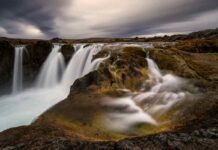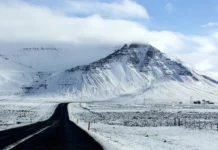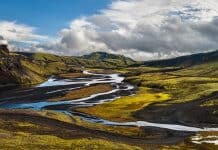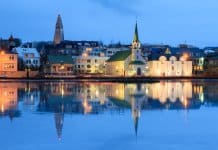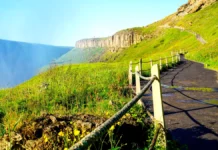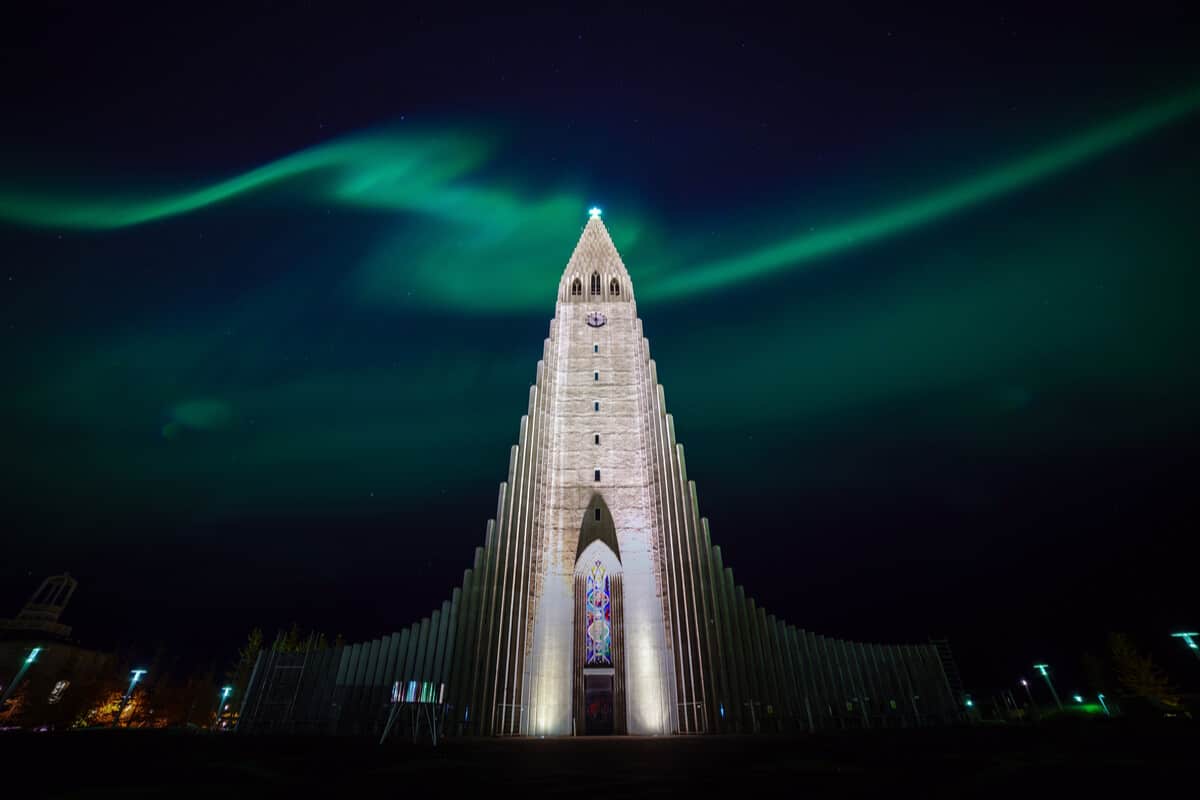Iceland is a country of extremes; after all, we’re known as the Land of Fire and Ice. But it’s not just the elements here that are opposites. The hours of daylight you find during Iceland in winter and summer are also quite different. We all know about the Midnight Sun, but does Iceland get polar nights as well? Exactly how much daylight can you expect in Iceland in the winter?
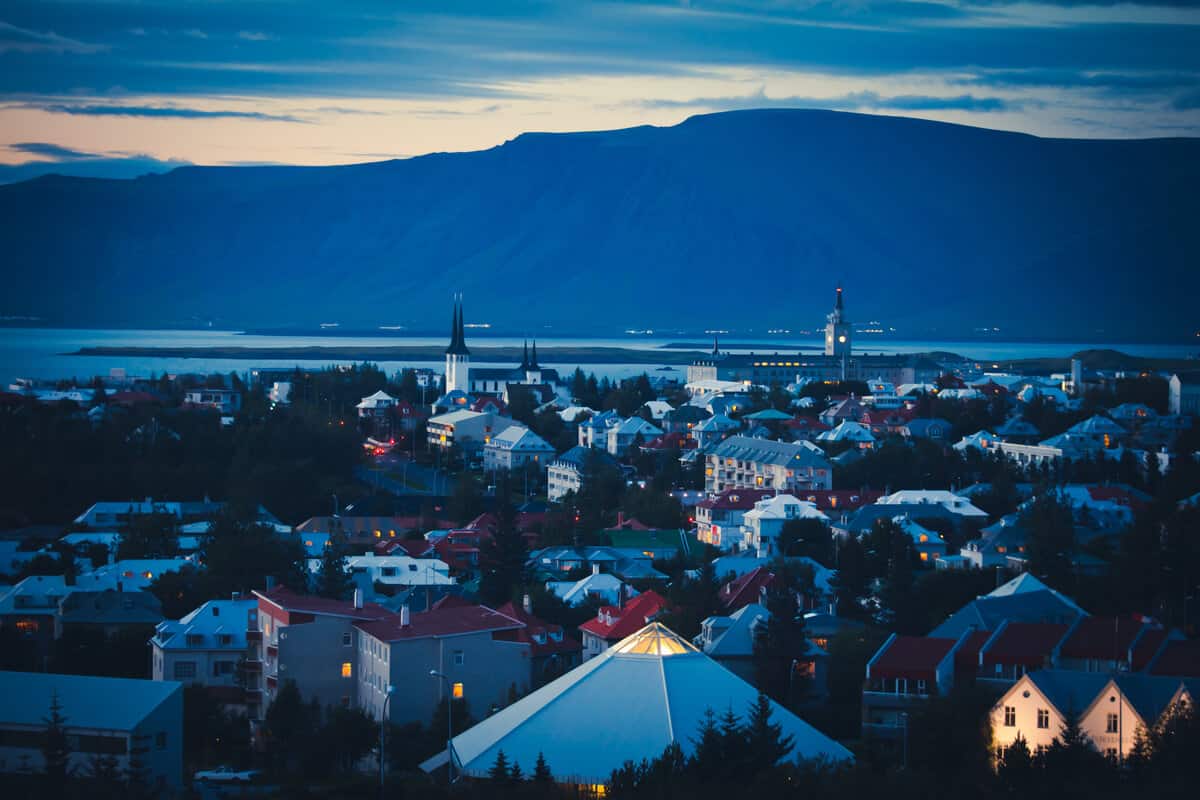
What are Polar Nights?
If you’ve never heard of this natural phenomenon, let me explain it to you. Polar nights are when there is total darkness for 24 hours. Think of it as the opposite of the Midnight Sun in Iceland. Close to the summer solstice on June 22nd, there is nearly non-stop daylight. The same is true in the winter, except that, with the exception of a few hours, it’s dark most of the time.
Countries like Norway, Sweden, or Finland, which are close to the North Pole or a polar circle, experience this. The same thing happens close to the South Pole. But why is that?
Winter solstices in both the Northern and Southern Hemisphere are the cause of polar nights. If you remember back to science class as a child, the earth is tilted at an axis of about 23.5 degrees. This means that as our planet makes its yearly revolution around the sun, there are certain times when the northernmost and southernmost poles are either completely blocked from or exposed to light. The result is that the Arctic Circle and Antarctic Circle are plunged into either full day or full night.
You can only experience true polar nights within a polar circle. Because it rests just below the Arctic Circle, Iceland does not get polar nights, at least in the standard definition. Depending on the time of the year, Iceland will either experience the Midnight Sun with a short night or very few hours of daylight.
Daylight Hours in Iceland in Winter
So now that we know there’s not a total winter blackout, how many hours of daylight does Iceland get in December and January? The winter solstice, which is the shortest day of the year, is on December 22nd. With the sun rising as late as 11:23 am and setting around 3:30 pm, you’ll only have about four hours of daylight close to the winter solstice.

If you’re planning a trip to Iceland in the winter, here are sunrise and sunset times to help you get an idea of when there is sunshine.
- December 1st: Sunrise at 10:45 am and sunset at 3:45 pm
- December 15th: Sunrise at 11:15 am and sunset at 3:30 pm
- January 1st: Sunrise at 11:19 am and sunset at 3:42 pm
- January 15th: Sunrise at 10:56 am and sunset at 4:18pm
Essentially, you’re getting between four to five hours of sunlight a day during the depths of winter in Iceland. This is important to know when planning activities, excursions, and outings.
How to Make the Most of Your Winter Trip to Iceland
This minimal amount of daylight hours means you need to get creative when visiting Iceland. There simply won’t be time to fit in both a whale watching excursion and a trip to the Golden Circle in one day. Your trip will require careful planning, both with choosing winter activities and the schedule for optimizing your driving time.
Here are two things to keep in mind when deciding where to go and what to do.
Iceland’s Northern Lights
One of the best things about winter in Iceland is that you’ll have ample opportunities to spot the famous Northern Lights. Mother Nature’s spectacle in the sky Northern Hemisphere will no doubt be a highlight of your trip. The best way to see the Lights is on cold, clear, dark nights.

Set aside some time while you are traveling to go on a DIY Northern Lights hunt or take an excursion with a tour operator. Check the aurora forecast on the Iceland Meteorological Office’s website to see if aurora activity is high for the night. You’ll also want to take a look to make sure the sky is not overcast. Seek out areas with low light pollution, so you’ll need to get away from cities and towns.
Use Civil Twilight to Your Advantage
While the Northern Lights and other nighttime activities may seem obvious, there’s another trick you might not be aware of. It’s something that tends to go unnoticed by people with more regular solar hours, but it could also be a great hack for your Iceland camping trip.
So what is civil twilight exactly? Well, as you’ve probably noticed, when the sun sets, it doesn’t get dark immediately. You still have an hour or two of semi-light or semi-darkness. It’s not until a few hours after sunset that it gets pitch black. The same thing happens with the sunrise. Light will peek over the horizon long before the sun shows its face.
So what does this have to do with you? Well, if civil twilight starts between 8:30 and 10 am, as it does in Iceland in winter, use this time to your advantage. You can drive to places like Snaefellsnes peninsula or start your day heading towards Thingvellir before the sun comes up. That way, you’ll arrive just in time for “sunrise” at 11 am or so to start whatever you had planned.
Do the same thing in the evenings, and plan your drive home to start when the sun sets so that you’ll arrive by the time it’s pitch black. And of course, if you’re comfortable driving in Iceland in the winter at night, then by all means, stay out later.
Does Iceland Get Polar Nights?
So while Iceland does not get polar nights, you will definitely find reduced daylight hours in the winter. Having time for everything takes a little bit of imagination and thinking things through in advance. Armed with your new knowledge about civil twilight will hopefully help you to create the best itinerary for your trip. After all, we don’t want you to miss a thing.


